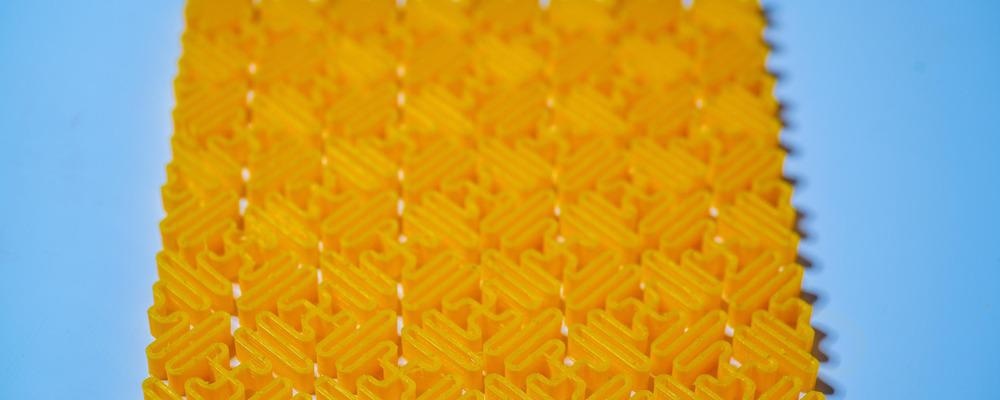In a recent paper published in the journal Applied Materials Today, researchers from the United Kingdom evaluated the progress in the field of acoustic metamaterials, focusing on passive acoustic metamaterials, piezoelectric acoustic metamaterials, and metasurfaces.

Study: Recent progress in acoustic metamaterials and active piezoelectric acoustic metamaterials - A review, Image Credit: luchschenF/Shutterstock.com
Metamaterials and Acoustic Metamaterials
Metamaterials are primarily artificial materials formed using periodic sub-wavelength structures having characteristics and functionalities not found in nature. The initial research on metamaterials focused on electromagnetism. Post-development of initial research in metamaterials, metamaterials with negative indices of refraction, double negative reflective indices, and electromagnetic metamaterials were developed.
Acoustic metamaterials (AMs) are artificial materials with unusual, effective properties to modify acoustic waves. Passive AMs cannot provide external energy input into acoustic waves, and the first passive sub-wavelength meta-atom was developed to demonstrate high sound transmission loss. Passive AMs were later classified into sub-wavelength meta-atoms passive AMs, periodic acoustic metasurfaces passive AMs, Helmholtz resonators passive AMs, and porous metamaterials passive AMs.
Recent research focuses on active elements to be incorporated into AMs; for example controllable temperature, piezo-shunting, controllable temperature, structural deformations that alter properties, pressure, electric field, and magnetic field effects. Active AMs enable the creation of anomalous effective material properties at tunable frequencies, while active piezoelectric AMs combines the benefits of active AMs with the ability to regulate them through solid-state electronics.
The present study traces the advances in research from passive acoustic metamaterials to active piezoelectric acoustic metamaterials and also summarizes recent research progress in acoustic metamaterials.
Fundamentals of Acoustic Materials
The fundamental equation governing the acoustic wave propagation inside homogeneous media in the absence of internal sound sources is dependent on the sound pressure, time, medium's mass density, bulk modulus, and the specific acoustic impedance.
Metamaterials: An Overview
The mechanism of resonant acoustic meta-atoms with deep sub-wavelength diameters is based on oscillators that generate out-of-phase responses to alter the propagation of waves. In most cases, the transmission loss of airborne acoustic waves into an assembly obeys a mass law over a given frequency and density range.
Passive Acoustic Metamaterials
Passive AMs do not supply energy to an AM system stimulated by an incident acoustic wave. Without external energy input, anomalous events are achieved in passive AMs, and the structural design fixed the frequency response. They are classified into various categories based on the artificial structure: periodic acoustic metasurfaces with space coiling, subwavelength meta-atoms with space coiling structures, Helmholtz resonators, membrane and plate resonators, and porous materials.
Active Piezoelectric Acoustic Metamaterials
The term "active AMs" refers to AMs with components that can be altered during operation or exchange of energy by sonic waves. This study focused on active AMs with piezoelectric materials because of their potential uses in a wide range of industrial applications and opportunities for electronic control.
Piezoelectric materials are solids that build an electrical charge on their surface when mechanical force is applied. The piezoelectric effect is a linear interaction between mechanical and electrical fields that occurs when certain crystalline materials lack inversion symmetry. Active AMs based on piezoelectric materials, which combine mechanical resonators with piezoelectric elements connected to an external load, can produce locally resonant bandgaps close to mechanical or electrical resonance.
In piezoelectrics, the interaction of electrons with acoustic waves consists of three separate phenomena: gain, acoustoelectric effects, and non-linear mixing. Based on controllable bulk modulus and effective density, active piezoelectric AMs are classified as active piezoelectric AMs with tunable effective density, active piezoelectric AMs with tunable bulk modulus, and active piezoelectric AMs with the double tunable property.
Conclusions
Over the last two decades, the field of acoustic metamaterials and metasurfaces has advanced at a rapid speed. AMs' unusual material properties have been regarded as a development beyond the properties of traditional materials, with the potential to enable a variety of advancements.
New possibilities in physical and technical applications have been realized, including enhanced sound absorbers and insulators, cloaking, communications, wave manipulation, energy harvesting, imaging, and medical devices with reduced size and weight.
AMs are limited by their intrinsically small bandgaps, high dissipation at the resonance frequency, which results in significant energy loss, structural complexity, and fragility. Additionally, passive AMs are not responsive to changing operating settings or environmental variables; as a result, the exceptional performance cannot be managed or optimized under varying service conditions.
However, there is still significant scope for improvement in active piezoelectric AMs. The piezoelectric materials that are typically utilized have an excellent acoustic impedance that match water but a poor fit with air (as a medium), resulting in acoustic energy leakage into unwanted wave modes. As a result, there is a trade-off between efficiency, frequency range, device size, and wavefront manipulation capacity in active currently available piezoelectric AMs.
Disclaimer: The views expressed here are those of the author expressed in their private capacity and do not necessarily represent the views of AZoM.com Limited T/A AZoNetwork the owner and operator of this website. This disclaimer forms part of the Terms and conditions of use of this website.
Source:
G. Ji and J. Huber, Recent progress in acoustic metamaterials and active piezoelectric acoustic metamaterials - A review, Applied Materials Today, https://www.sciencedirect.com/science/article/pii/S2352940721003231